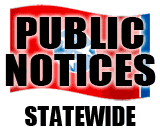
By ROBERT D. BUSH
(County Historian)
By the beginning years of the 20th century the Federal Government authorized numerous 'Rural Mail Carriers' in the Tennessee area. They were to carry letters almost to a patron's very doorsteps. (Home delivery started even earlier in more urban areas of Tennessee. These first rural carriers only were authorized to deliver letters, other forms of mail were added in later years.)
Even before the Civil War locally appointed post masters carried letters to one's home for additional fees. This home delivery required an additional postal stamp for generations. In the more remote rural areas of America, local residents picked up their mail from a local post master. It was the responsibility of this local post master to receive letters as well as provide some means by which patrons could send letters.
Sometimes these early post masters rented space in a nearby business establishment such as a store. Many of these post masters owned store houses, others rented space there.
Abraham Lincoln, looking for work when he arrived in Salem, Illinois, was appointed post master there. Too poor to rent post office space at the local store, as he often commented, he carried undelivered mail, sometimes for weeks, under his hat. Sometimes it was months before the mail was picked up by a local resident, especially if there was postage due. Many times letters were just sent back to a "dead letter office."
Charles Ready, post master at a town called Readyville during the 1830s, posted names of undelivered mail in Murfreesborough newspapers. These early post masters often doubled as merchants, blacksmiths and even bankers in rural communities where they wore more than one hat.
Even until the 1970s the late Mr. Kidwell, cashier at the Melton's Bank at Gassaway, performed the duties of both banker and post master, carrying out his duties at the same teller window. Well known merchants at Bradyville were Knox, Patton, Mears, Lemons, Bynum and Caffy all doubled as post masters. the United States mail service slowly did away with such practices.
A rural letter carrier (or carriers) was first established at Woodbury about 1903. Rural routes were established starting at the early post office there. Several Post offices with post masters were located across Cannon County in villages and small hamlets. Post Offices that had rural carriers working out of them after the turn of the century were Readyville, Bradyville and Woodbury. Some sections of the county had carriers with established routes from outside the county. Both post offices at Liberty and Milton had rural letter carrier routes that extended into various regions of the county. This may have led to the closing of the Post Office called Auburn in 1901, before being reopened in 1919 as Auburntown. These early carriers traveled into places where few roads existed. This no doubt was one of the first reliable communication networks established throughout rural counties at the turn of the century.
These rural carriers were sometimes asked to rely verbal messages to a neighbor down the road. My own grandfather, James L. Bush, who was the first rural letter carrier appointed for the Bradyville area, recalled in later years several episodes throughout his long career where he deviated from his daily carrier duties. He once stopped to help a neighbor drive some cattle out of a farmer's cornfield, and even "help fix back the fence". He once stopped and performed a marriage ceremony, and, recalled one time driving his buggy back to the town of Bradyville to secure a doctor for a patron he found deathly sick at his home. He visited his elderly mother along the Gilley Hill Road regularly.
If one needed information about certain individuals in small communities they needed only to ask a letter carrier there. Checking on isolated families in those days was something James L. did throughout his career.
By the first decade of the 20th century 'hack wagons' began to appear more often across Cannon County. These canvas covered wagons, pulled by two horses, dropped the mail between designated post offices. They were called "Star Routes." Star routes existed well before there were rural letters carriers, and by the turn of the century these hack wagons would even carry passengers or even cargo for a fee. An early entry in the Cannon Courier newspaper printed a hack wagon's schedule, including departure and arrival times. These early hack wagon schedules were hard to keep, pending breakdowns and other interruptions. Sometimes these rural letter carriers had to wait for hours before the mail arrived for that day's distribution over the rural route. My grandfather often told how it was sometimes late in the night before he returned home from his mail route. On cold winter days he would be chilled to the bone. It was my father's job even as a small boy to park the mail buggy, un-hitch the horse, seeing also the horse was placed in his stall and fed, while my grandfather headed for the house to warm his feet by the fireplace.
The most popular hack wagon route about the turn of the century was from Woodbury to Murfreesboro over the old stagecoach road. The Patton brothers at Bradyville, who were also merchants during this time held the contract for a Star Route from Hollow Springs to Bradyville - .from Bradyville to Murfreesboro via the Bradyville Turnpike. Andrew Reed, a Bradyville resident, drove this hack wagon for the Patton's for many years.
Portions of these early routes are still in use today. These rural carriers worked out of local established post offices and were under the supervision of the local post master- starting with these rural carriers mail was delivered to patrons on a routine daily basis along an established route. Patrons could even purchase money orders and stamps for their letters from these rural carriers.
Carriers dropped these letters in mailboxes located at the "end of the lane" near their homes, however patrons were required to have a mailbox made from proper materials located on certain sides of the road, as well as be a certain height above the ground.
It was many years later before the entire county had the convenience of having mail delivered to every household. There were instances as late in the century, about carriers still transporting the mail in certain areas by horse and saddle bag.
There existed throughout the county several community drop-off points for mail A community known as Curlee along the Brawley Fork had for many years a row of mailboxes nearby its schoolhouse where a swing bridge was used by patrons to cross to the other side of the creek for mail pick up. The mail was only delivered to these mailboxes by the rural carrier. In the days when my grandfather carried the mail in a horse drawn mail buggy, he had locations where he just "dropped" the mail off-two such places were Hollow Springs and Tolbertsville - while there he sorted the letters in specially designed cubicles in the storehouse.
My grandfather once told the story that his 'Mail Buggy Horse' was so well trained that he [the horse] would pull his buggy to the exact spot to put the letter in the mailbox, and, would wait, "only so long," before proceeding to the next mailbox, giving him time to pull and sort letters from the small cubicles that held the day's mail inside the buggy. That faithful horse would stop again at the next mailbox without him even "yelling"at the animal.






